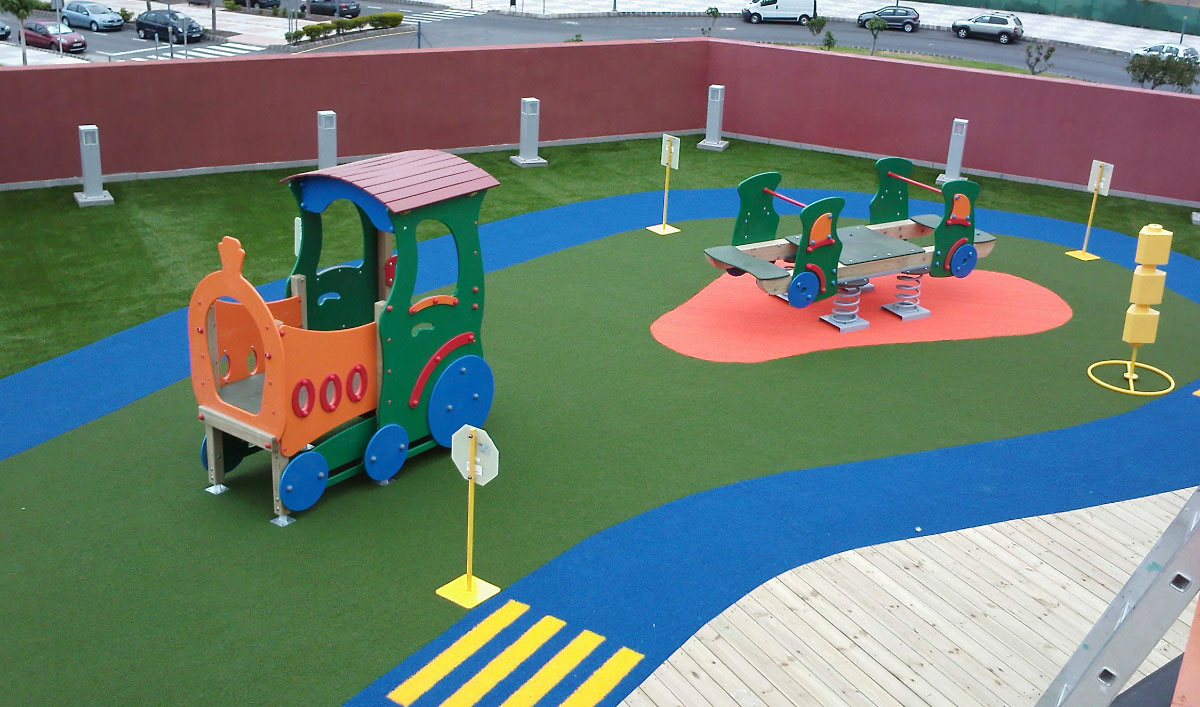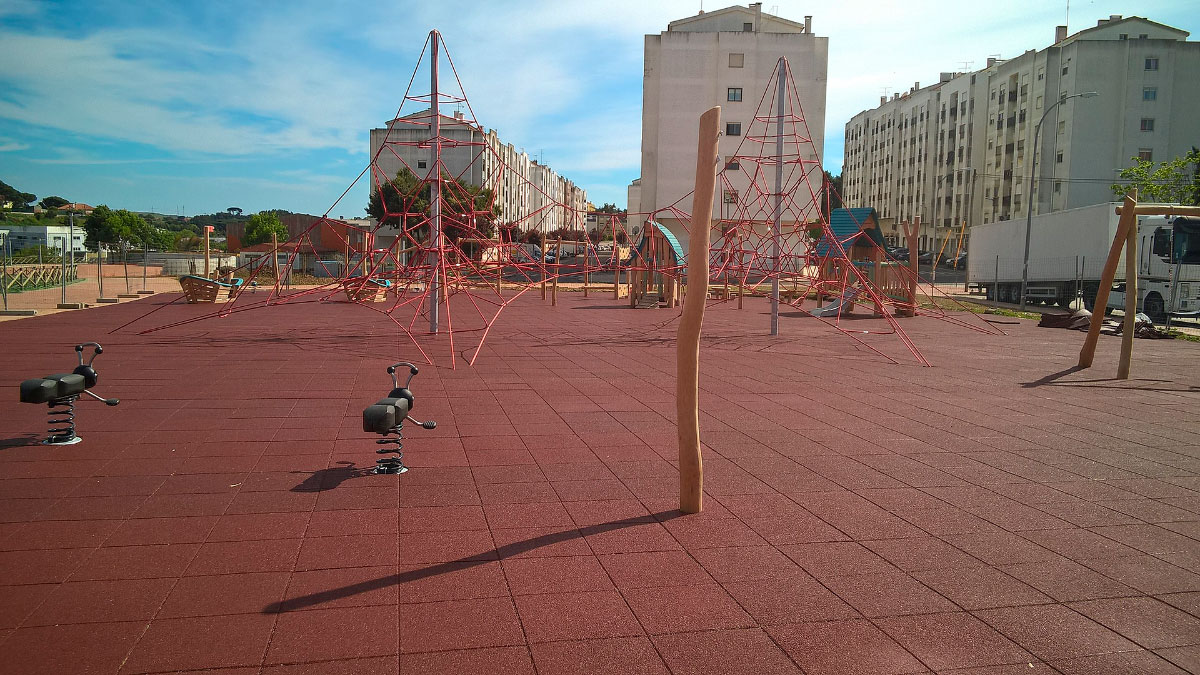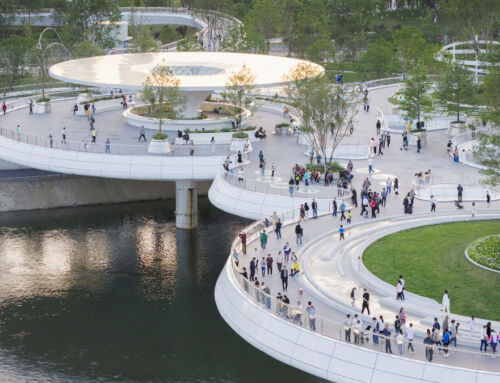The impact-absorbing capacity of rubber flooring makes it the preferred choice for fall protection in playgrounds, daycare centres, and recreational areas. There are two main types of shock-absorbing flooring, each with its own advantages.
Prefabricated rubber tiles, ideal for regular surfaces, stand out for their ease of installation and maintenance. This is a modular solution, allowing individual pieces to be replaced without affecting the overall structure. In contrast, continuous, in-situ flooring, composed of a mixture of rubber granules and resin, is applied directly to the base, providing a seamless finish and complete design freedom. This option is particularly suitable for irregularly shaped areas or integrated play elements, as it can be adapted to any spatial configuration.
These floorings, which comply with European safety standards for impact absorption, also offer exceptional resistance to intensive use, adverse weather conditions, and prolonged UV exposure. Maintenance is minimal, consisting of periodic cleaning, making them economically viable in the long term. From an aesthetic perspective, they allow for complete customization in terms of colours and shapes, with attractive and stimulating designs for users.

Furthermore, installing continuous flooring requires specialised labour, which can increase the cost compared to modular tiles. Furthermore, in hot climates, rubber—especially in dark shades—can reach high temperatures under direct sunlight. In the case of tiles, an uneven base or insufficient compaction can lead to shifting or unevenness over time, which could affect both the safety and aesthetics of the pavement.
By Pablo Vidal, Senior Architect in the Architecture Department at Amusement Logic






